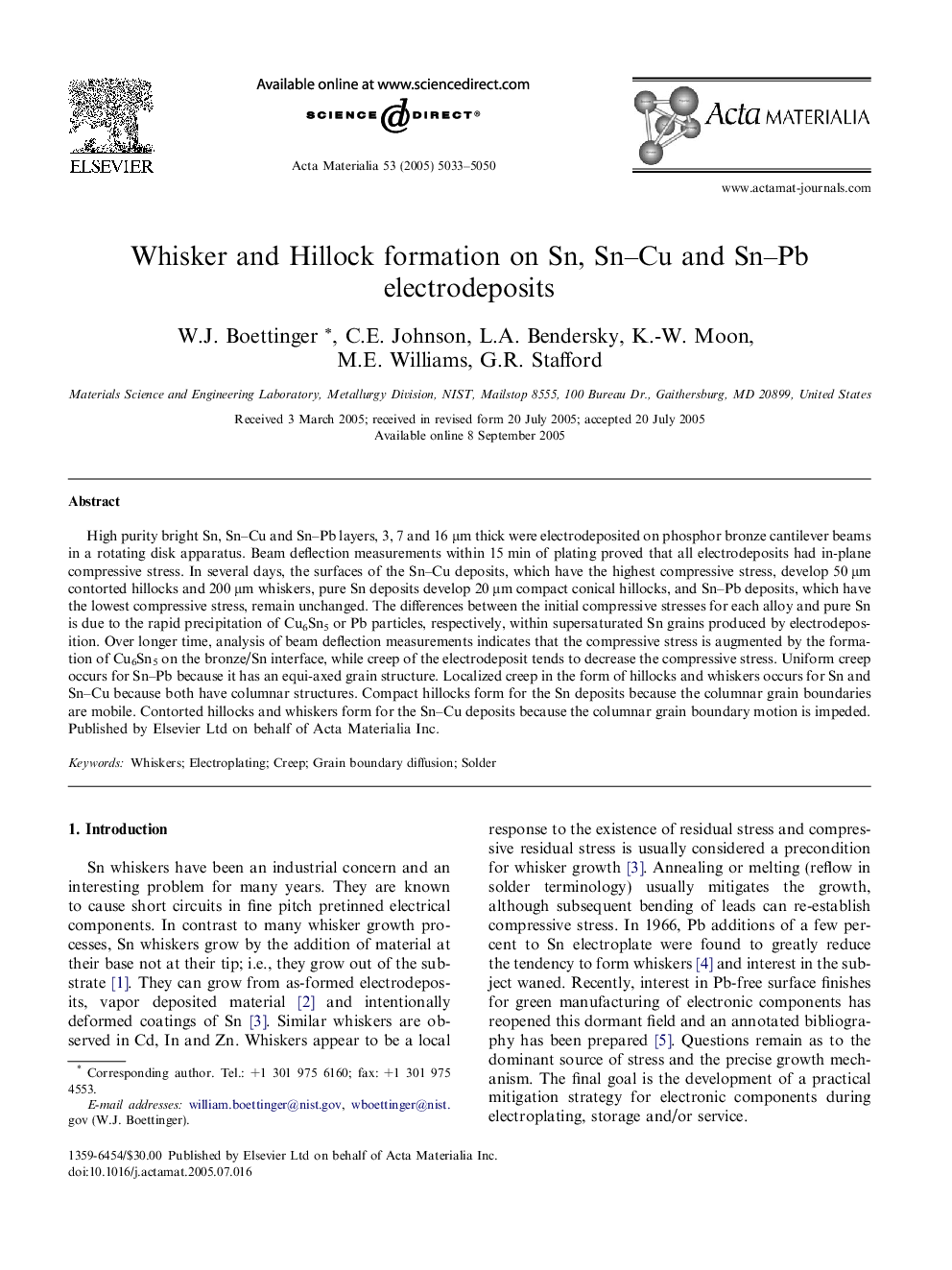| کد مقاله | کد نشریه | سال انتشار | مقاله انگلیسی | نسخه تمام متن |
|---|---|---|---|---|
| 1451292 | 988767 | 2005 | 18 صفحه PDF | دانلود رایگان |

High purity bright Sn, Sn–Cu and Sn–Pb layers, 3, 7 and 16 μm thick were electrodeposited on phosphor bronze cantilever beams in a rotating disk apparatus. Beam deflection measurements within 15 min of plating proved that all electrodeposits had in-plane compressive stress. In several days, the surfaces of the Sn–Cu deposits, which have the highest compressive stress, develop 50 μm contorted hillocks and 200 μm whiskers, pure Sn deposits develop 20 μm compact conical hillocks, and Sn–Pb deposits, which have the lowest compressive stress, remain unchanged. The differences between the initial compressive stresses for each alloy and pure Sn is due to the rapid precipitation of Cu6Sn5 or Pb particles, respectively, within supersaturated Sn grains produced by electrodeposition. Over longer time, analysis of beam deflection measurements indicates that the compressive stress is augmented by the formation of Cu6Sn5 on the bronze/Sn interface, while creep of the electrodeposit tends to decrease the compressive stress. Uniform creep occurs for Sn–Pb because it has an equi-axed grain structure. Localized creep in the form of hillocks and whiskers occurs for Sn and Sn–Cu because both have columnar structures. Compact hillocks form for the Sn deposits because the columnar grain boundaries are mobile. Contorted hillocks and whiskers form for the Sn–Cu deposits because the columnar grain boundary motion is impeded.
Journal: Acta Materialia - Volume 53, Issue 19, November 2005, Pages 5033–5050